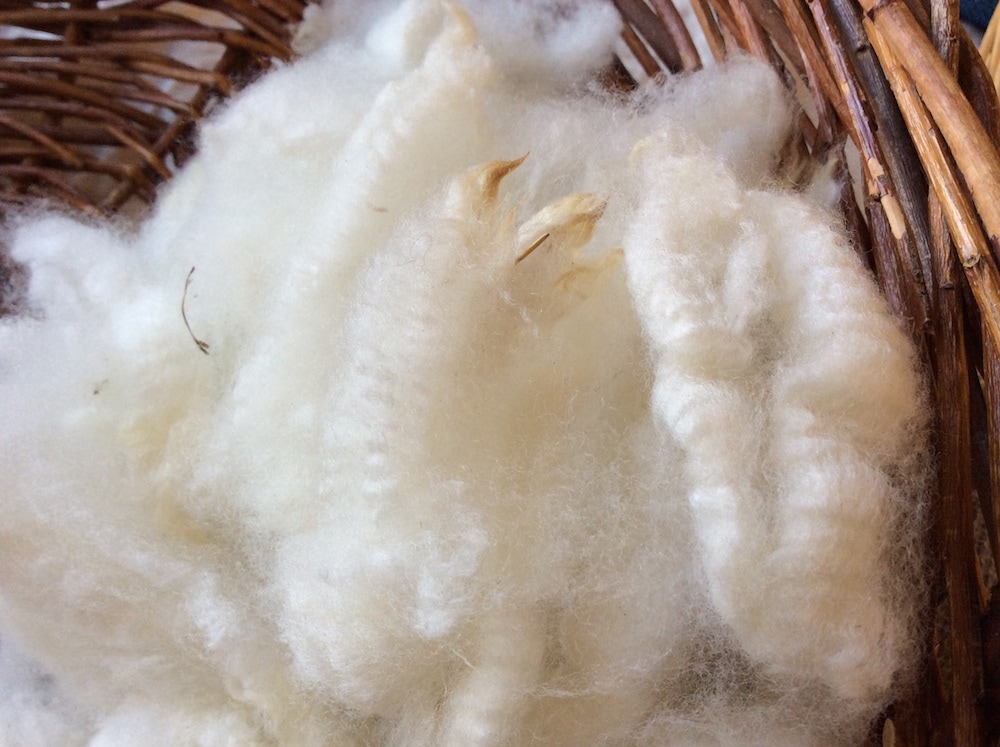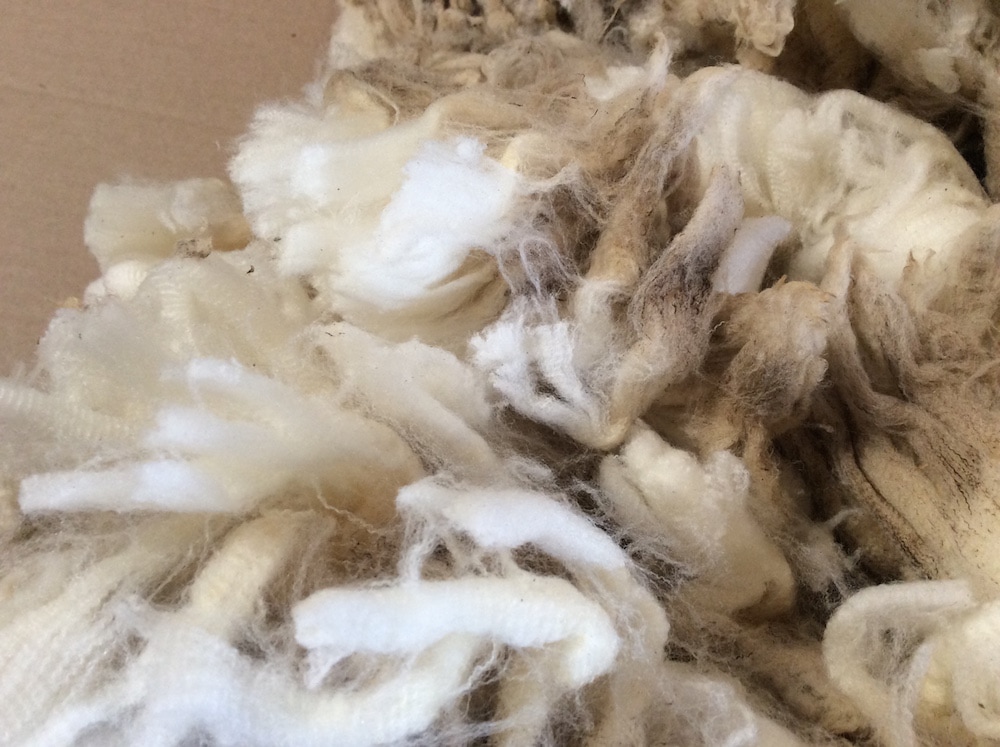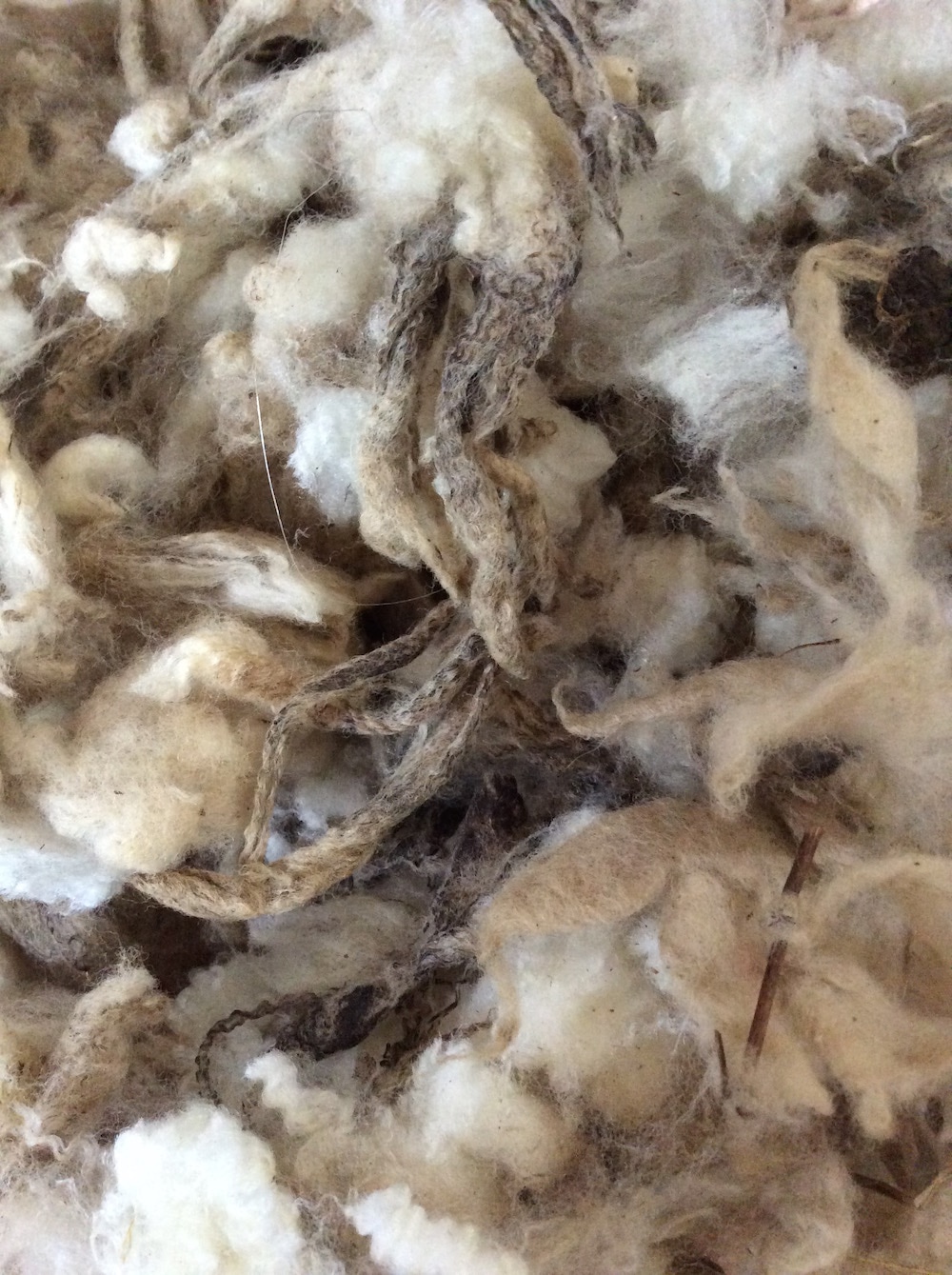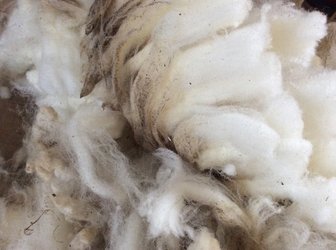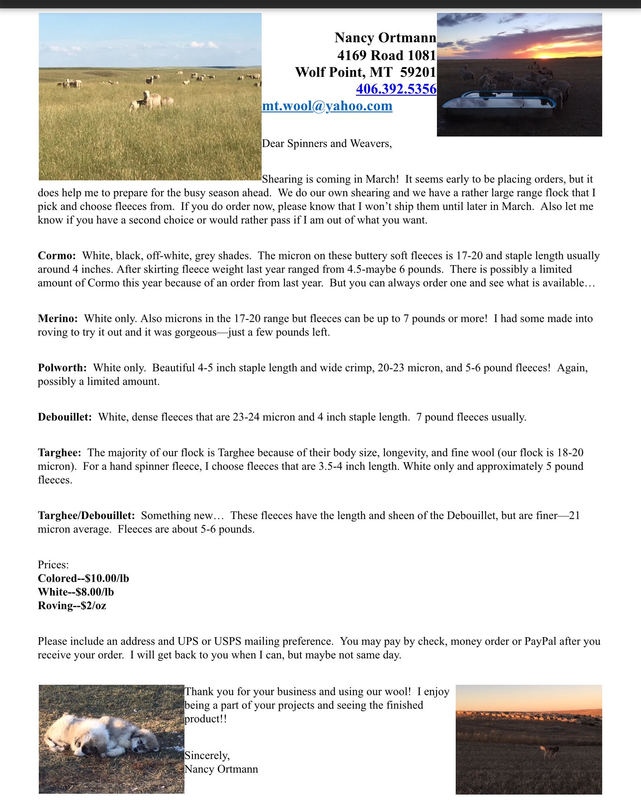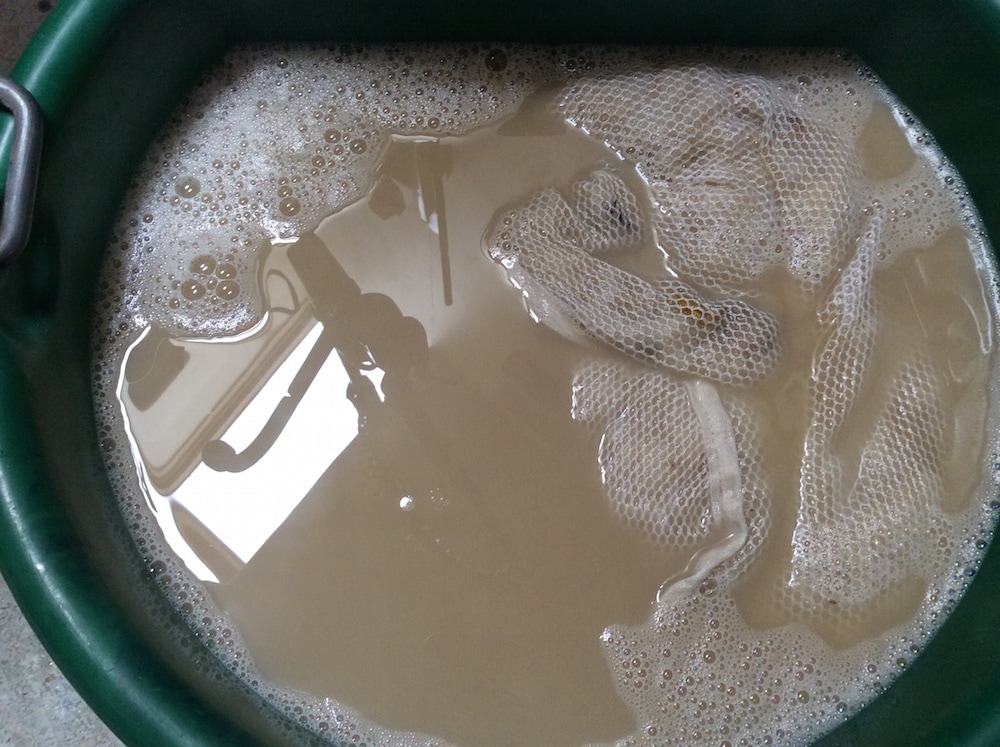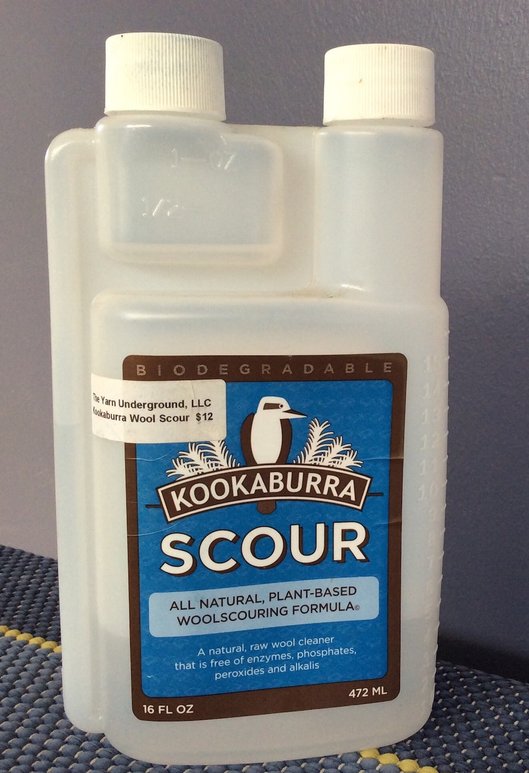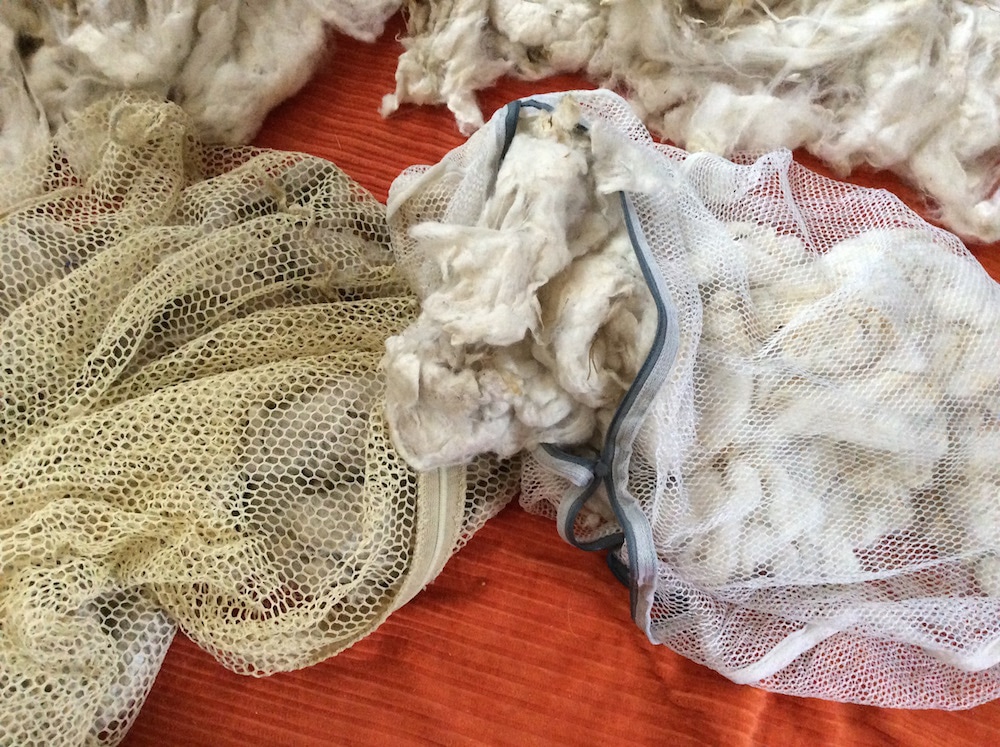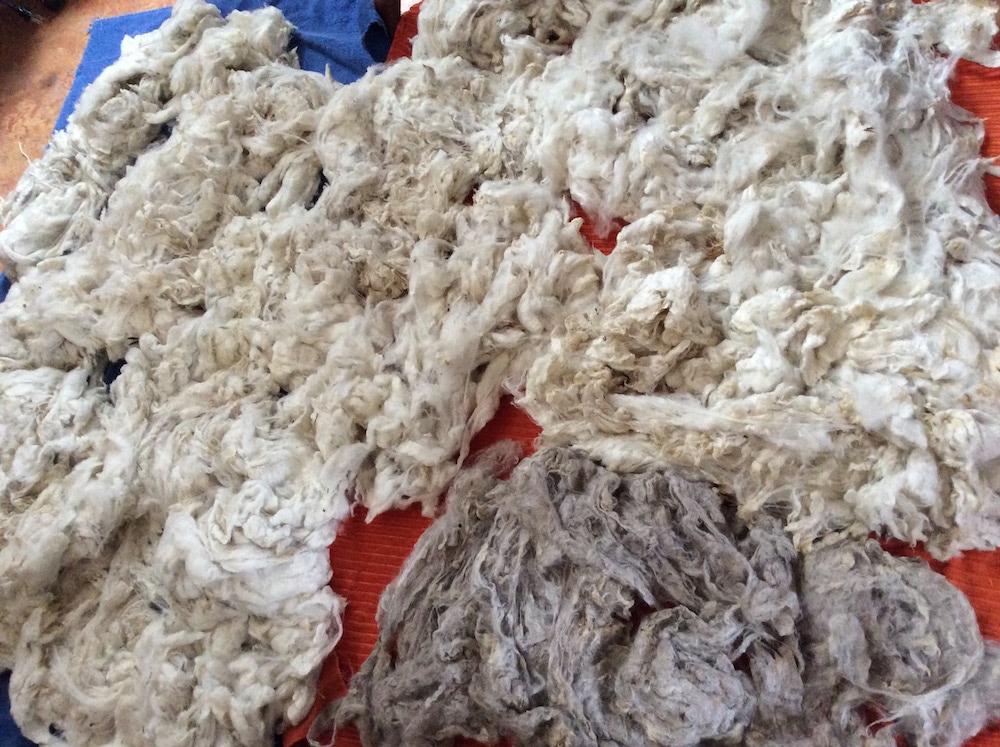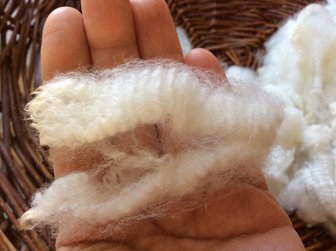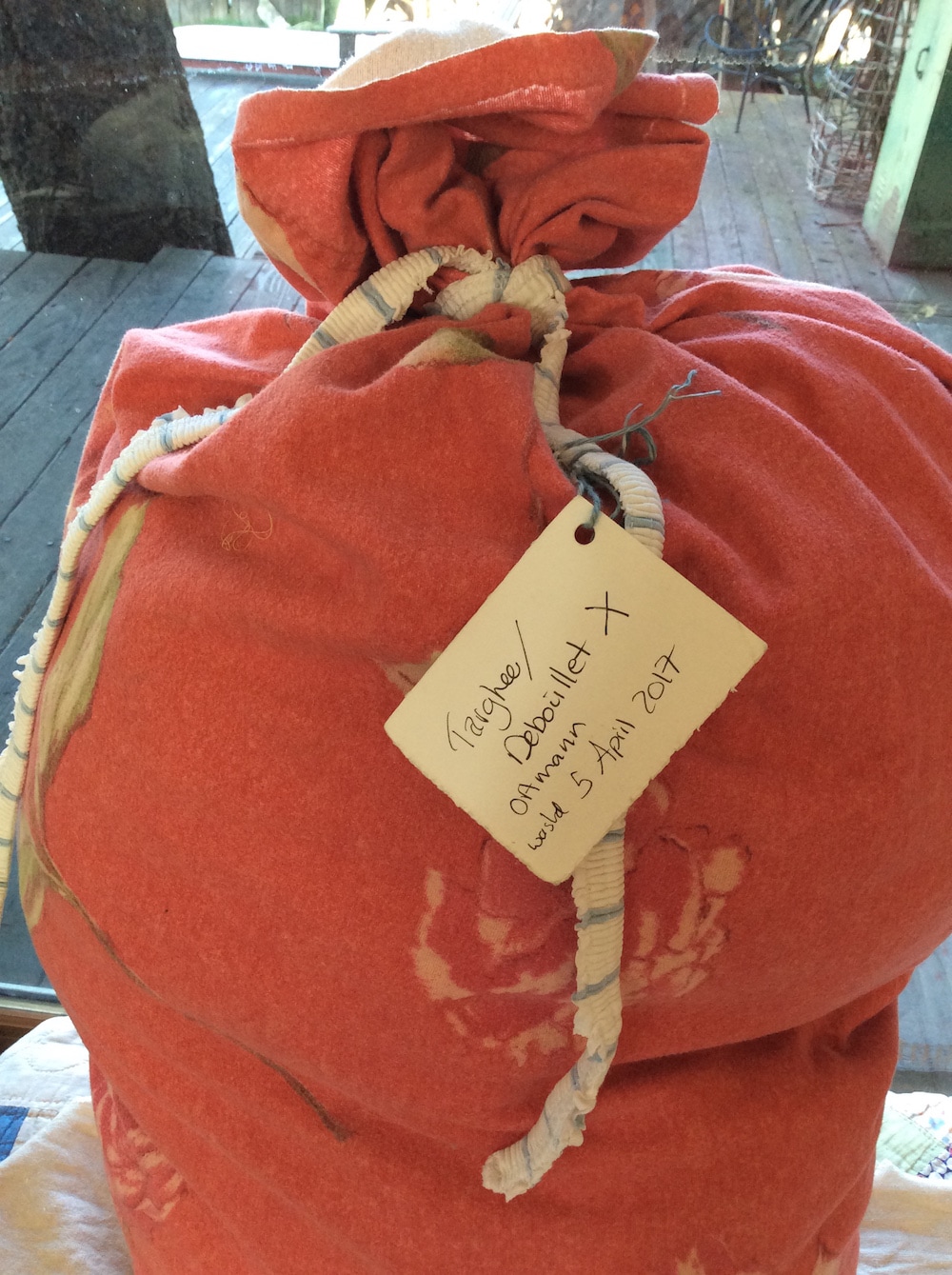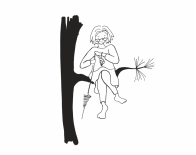I said I would write about my fleece washing technique when next I had something to work with.
Naturally in my excitement I neglected to photograph the unboxing and that thrilling moment when the compressed fleece puffed out like a muffin in the oven.
But here are some photos of the raw fleece -- a Targhee/Debouillet Cross I thought I would try.
Cormo was hard to find then, so this was a miracle indeed -- long, lustrous and next-to-the-skin soft. For a time, everything I knit was hand spun cormo.
So far, I'm thrilled.
about which I mostly have to say two things:
HOT WATER (150 F +)
Kookaburra Scour
The Kookaburra scour is a no rinse scour, which freaked me out at first as for years I followed what used to be standard practice (dish detergent with one to two washes and two to three rinses depending). But this stuff works so much better!
Life-altering for me, actually.
Anyway, the procedure:
1. Put approx 1 pound of fleece into a bag -- repeat.
(two net bags, 2 lbs fleece total)
2. Fill 5 gallon bucket with my hottest tap water then immerse the two bags and let them soak as the water heats in step 3.
3. Heat 4 - 5 gallons of water on the stove to 150 F or above (I use two pots for easy handling)
4. Roll bags into a sausage (still under water) squeezing as I roll (helps keep lock structure vaguely intact if the wet wool doesn't flop around in the net bag when you lift it out), then lift from mucky water, squeeze again, set aside.
5. dump muddy water into the garden and refill bucket with the VERY Hot water from the stove..
6. Add Kookaburra SCOUR as per instructions (1-2 oz / lb of wool depending on greasiness). Stir gently with a stick or spoon (don't scald yourself!!!)
7. Squeeze bags of fleece again, unroll and immerse in fresh hot scour water.
8. Let soak for approx 15 minutes, pressing down or gently manipulating the bags in some fashion once or twice -- CAREFUL OF HOT WATER! (This may not be necessary as wool is good at doing this work itself, but I have this mental vision of wanting to move the water through the fleece as much as possible without actual agitation.)
9. Repeat underwater rolling procedure - WEARING RUBBER GLOVES WITH INSULATING LINERS (Scalding is real and hurts. I use winter glove liners inside big rubber gloves with great success).
DO NOT discard remaining hot water.
10. Put the two net bags in washing machine and set to SPIN ONLY to spin out water
or
use dedicated salad spinner, one bag at a time
or
stand outside and swing your arm in great circles, flinging wash water all over
or
wrap well squeezed bag of wet fleece in towels and stand on it.
11. Spread clean fleece out on other towels to dry -- or sweater dryers. Nicest outside on a sunny day but those are scarce around here in the spring..
12. Put two more pounds of greasy fleece into the empty bags then into the remaining water from the previous wash for a pre-soak while heating water For step 3 etc.
13 -- repeat step 3 -12 except at step 6, use only half - 3/4 the amount of Kookaburra called for because the fleeces got the pre-soak in water that already had scour in it.
Also note: that when these bags of fleece go into the new clean hot water with scour, they will want to float as they are already somewhat soapy. I flop them around a couple of times and push them down, but don't worry about it too much.
Less water and fewer rinses also mean far less opportunity for felting or messing up lock structure (though as you can see I made no specific attempt to retain said structure this time).
Even with heating the water extra hot, it all takes much less time than my old procedure and the fleece is ultimately cleaner and nicer to work with.
FYI -- I washed all of this fleece last Wednesday afternoon after my hair cut and oil change.
It was a productive day
I have to admit to being stuck in my ways until a couple of years ago when a friend gave me samples of several new scours and I conducted my own experiment with water temp and scour types and ended up with the system outlined above.
Water is precious here in Idaho, so I am thrilled to use less and am willing to heat it.
In Michigan Beth Smith, makes some other choices, washes far more fleece than I and is definitely worth listening to!
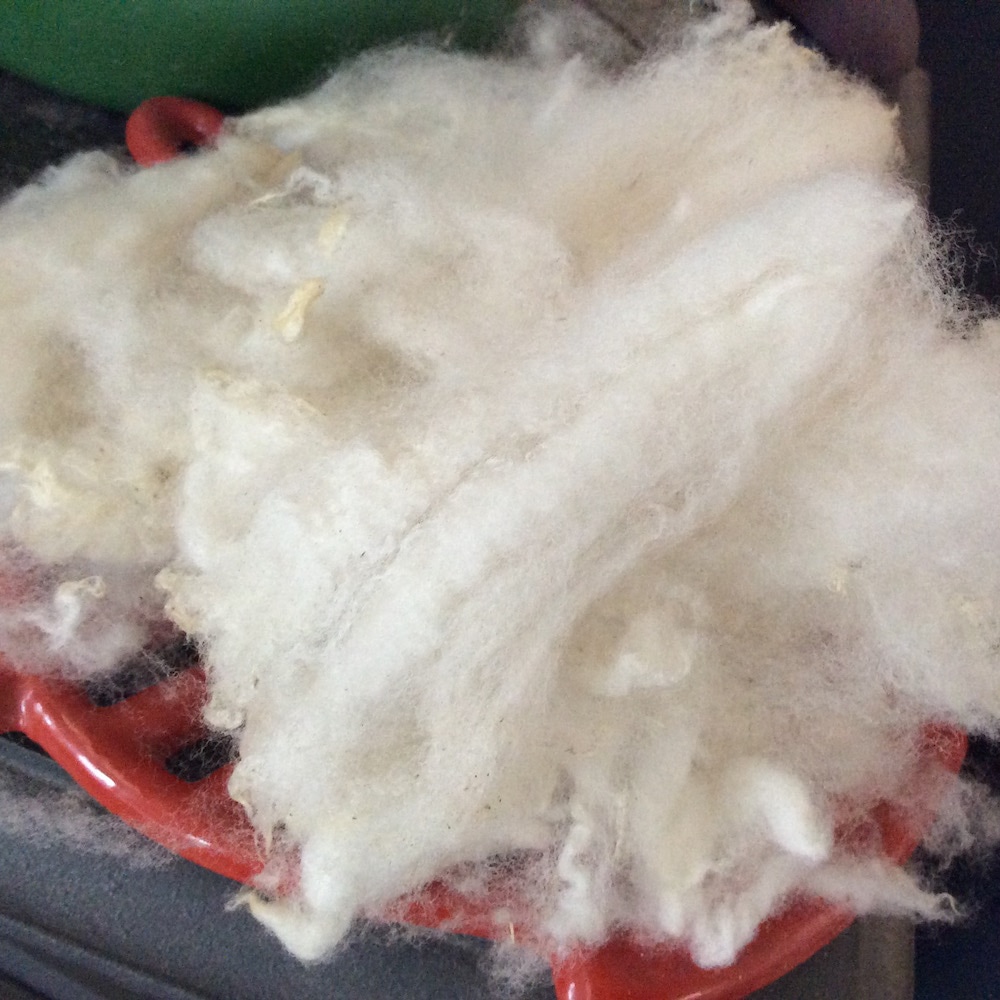 Freshly washed fleece on a trivet over my gas heater for quick drying because I can hardly wait to get my hands on it! Hard to believe these fleeces had all that Montana soil in them isn't it?
Freshly washed fleece on a trivet over my gas heater for quick drying because I can hardly wait to get my hands on it! Hard to believe these fleeces had all that Montana soil in them isn't it? Sometimes I patch the sheets, but my husband is a restless sleeper and wears through sheets and repairs faster than I can quite believe, so I end up with lots of bits. Luckily, I have endless need for bags made of tightly woven cloth, not only for fleece, but also for storing and shipping tapestries etc.
It's just so exciting to contemplate the possibilities, and to follow them through.
| Oops -- And one more thing: though I am super happy to clean dirt and mud from fleeces, esp range fleeces like these, I draw the line at gloppy manure tags, burrs and excessive Vegetable Matter. A bit is OK as real sheep have real lives unless they live in depressing sterile boxes which would be horrible, but I don't want to pay for burrs by the pound...Or hay. Or poop. |
